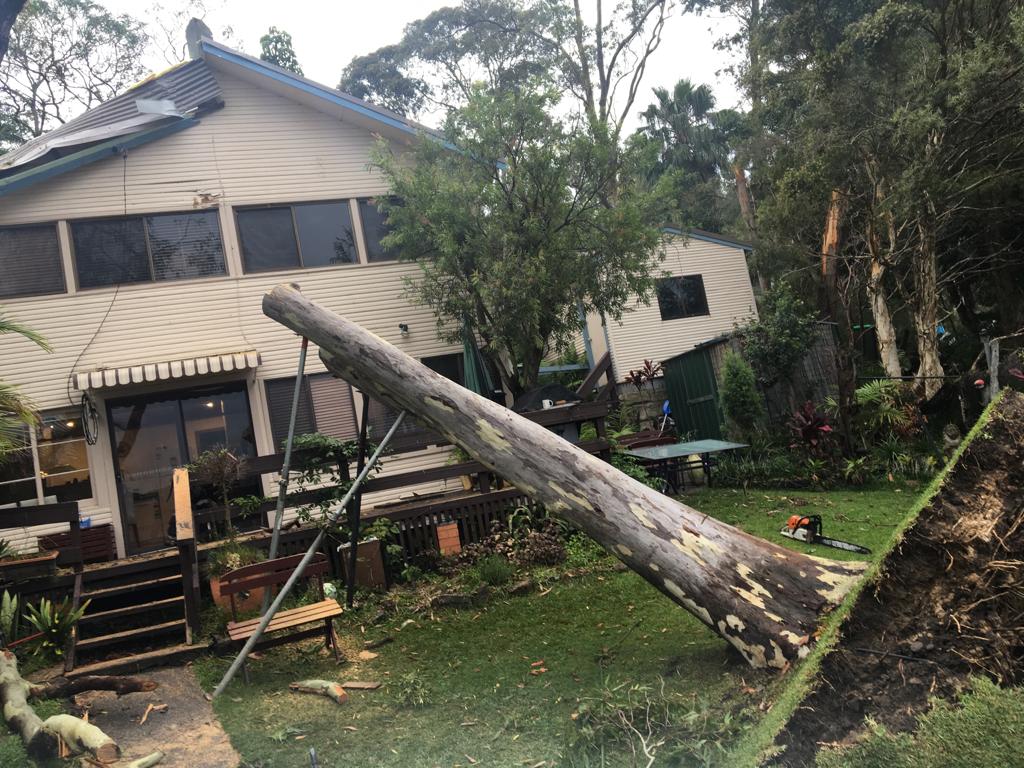Have you ever had a dead tree in your backyard that was adding a sense of gloom to your previously vibrant outdoor space? Then you’re not on your own. Don’t be concerned if working with a dead tree appears frightening. In this comprehensive video, we’ll walk you through each step of dealing with a dead tree at home so you can do the operation quickly and successfully.
Recognising the Problem’s To Deal With a Dead Tree At Home
Before commencing the removal operation, take a moment to assess the problem. Determine the proportions of the tree, its distance from buildings, and the degree of deterioration it has endured. This initial action lays the groundwork.
Dead trees can be dangerous because of falling branches or the possibility that the tree will go down completely. As such, your top goal should be to make sure your surroundings are safe.
Take Precautionary Steps To Deal With A Dead Tree At Home
When handling a dead tree at home, safety must come first. Make sure you have on the appropriate safety gear, such as a helmet, goggles, and gloves. If the tree is large, you might think about hiring experts to do a comprehensive risk assessment. Always put your own safety and the safety of those helping you first.
Do-It-Yourself vs. Expert Assistance
With safety precautions in place, you must now make a critical choice: do it yourself or hire a professional? Small, controllable trees might be appropriate for a DIY approach, but larger or more precarious situations may necessitate the expertise of arborists or tree removal services.
In addition to ensuring a safer removal procedure, professional aid guarantees knowledge on how to handle any potential issues, including electricity lines or surrounding structures.
Required Equipment for Removing Dead Trees At Home
Having the appropriate equipment is crucial for anyone who chooses to tackle DIY projects. A strong ladder, pruning shears, and chainsaws are typical items utilized in the procedure. Before beginning, make sure all of the tools are in excellent operating order and observe the safety instructions for each.
Step by Step Guide to to Deal with A Dead Tree at Home
Make sure the area is clear
First, make the surroundings around the tree clean. To make a workspace that is safe for working, remove any obstructions, including furniture and decorations.
Evaluate the Fall’s Direction
Ascertain the tree’s inherent inclination and strategize its descent to reduce any harm and hazards. Seek advice from a specialist if you are unsure.
Use Strategic Branch Pruning
First, begin by methodically trimming the tree’s branches. Using the right tools for each size, start at the bottom and work your way up.
Execute the Horizontal Slice
Place yourself with your back to the direction of the fall on the tree’s side. Cut an undercut, or horizontal cut, about one-third of the way into the tree. The fall’s trajectory is determined by this cut.
Produce the Back Cut
On the other side, cut a straight line that forms a horizontal line just above the undercut. This incision, recognised as the back cut, initiates the tree’s fall.
Last-ditch Push and Retreat
Get away to a safe distance as soon as the tree starts to fall. If necessary, steer the fall and make sure it moves in the desired direction with the aid of a rope.
Trash Removal and Making Use of the Dead Tree
After the tree is properly removed, the aftermath has to be cleaned up. Cut the tree into small pieces for disposal, or use the wood for other do-it-yourself projects. Wood from dead trees may be used for crafts, fuel, or even as organic decorations.
Maintaining the Health of Trees in the Future
Maintain the health of your surviving trees by taking preventive actions to avoid finding yourself in a similar situation later on. The general health of your garden friends is influenced by timely trimming, appropriate watering, and routine checks.
FAQs
How can I determine whether my tree is dead?
A1: Keep an eye out for symptoms including bare branches, a deficiency of new growth, and crumbly or moldy bark. Try a scratch test by scraping a tiny piece of bark to see whether there is any green tissue below, which would indicate life.
Can I safely take down a dead tree on my own?
A2: Security comes first. With the correct equipment and care, it is feasible to remove smaller trees yourself. However, for a safer and more effective procedure, larger or more unstable circumstances can call for expert aid.
What safety equipment is necessary for removing trees?
A3: Helmets, gloves, and goggles are necessary pieces of safety equipment. Wear clothes that protect exposed skin and strong shoes for do-it-yourself removal. When in doubt, seek expert advice for extra safety precautions.
Can I use dead tree wood for something else?
A4: Unquestionably! Wood from dead trees may be used for crafts, fuel, or as organic decorations. Make sure the wood has dried and cured properly before using it for other projects.
What can I do to keep the other trees in my yard from dying?
A5: Timely trimming, appropriate watering, and routine inspections all support the health of trees. Recognise any problems early on, give your trees the attention they require to flourish, and prevent more problems.
Conclusion
Taking care of a dead tree at home may appear to be a challenging task at first, but with the right knowledge and technique, you can convert this hurdle into an opportunity.
Safety should always come first, whether you do it yourself or employ a professional. By following the thorough guidelines and taking preventative care of the trees that you still have, you can ensure that your outside environment remains secure and alive for many years to come.




